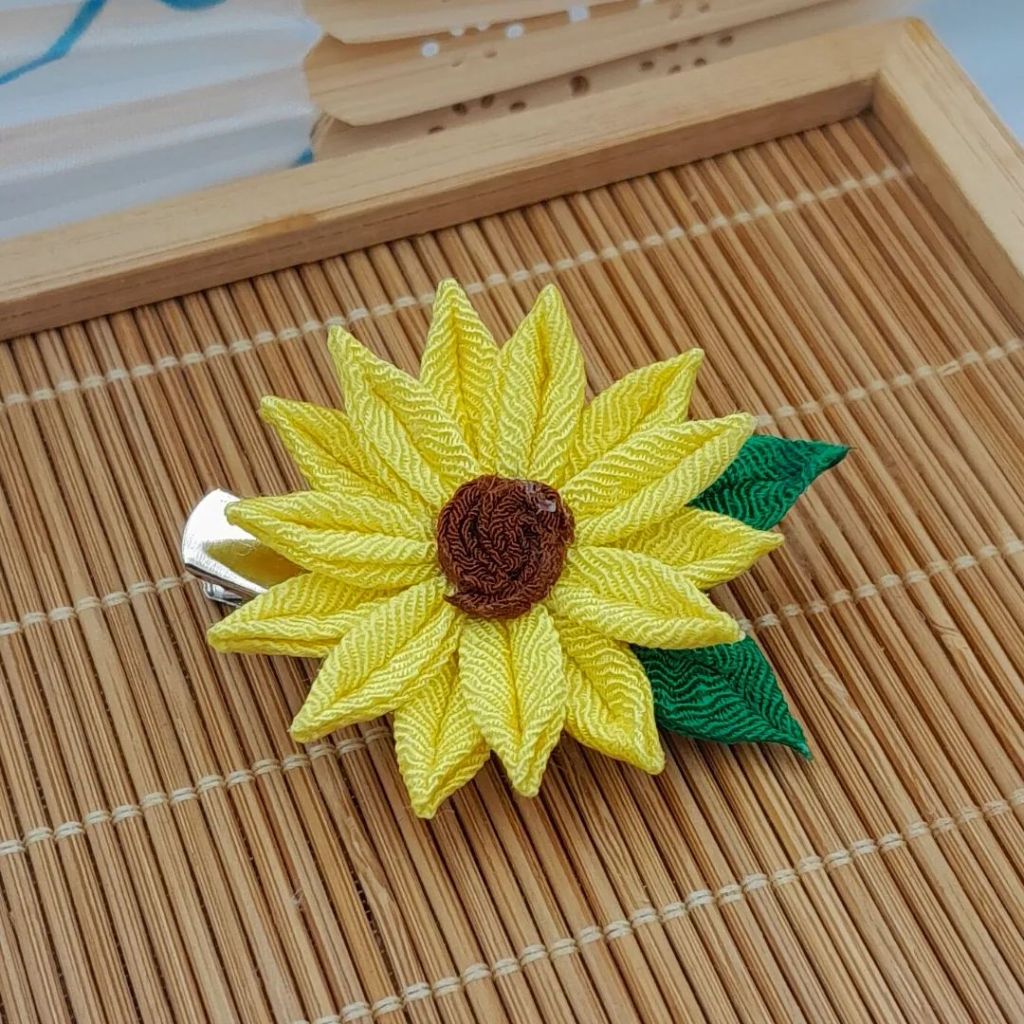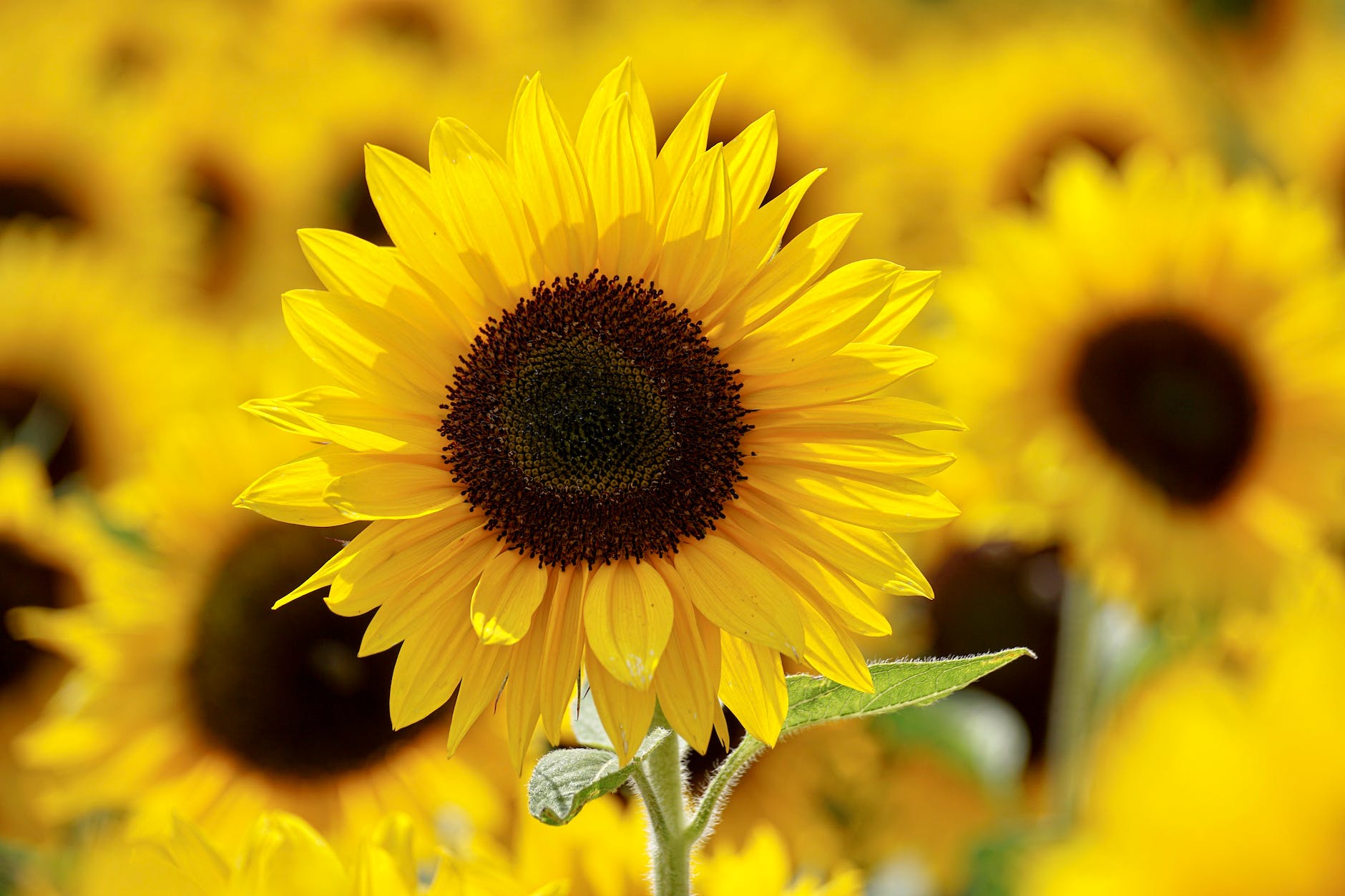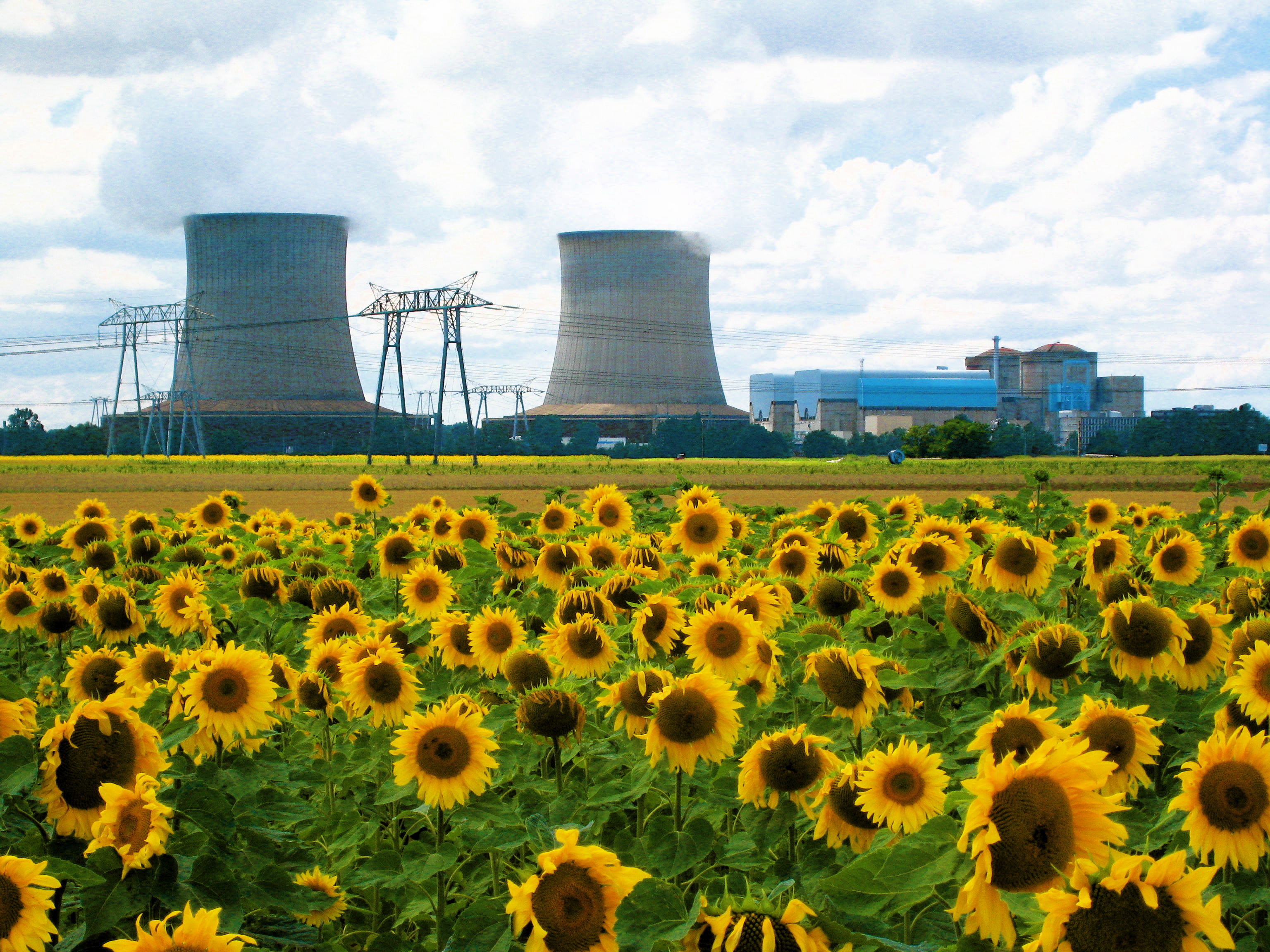In Japanese culture, the sunflower is associated with the sun, warmth, and most significantly, hope. And this is the story of how sunflowers became the symbol of hope, faith and recovery. As a motif, they are associated with August, though as a maiko kanzashi theme they are rare.

They first arrived in the country in the 17th century, during Japan’s Edo period (1603-1868), and originally met with an unenthusiastic reception. Taste at that time small, elegant items, and the big, bright sunflower felt showy and overwhelming.

The sunflower’s popularity grew over time, and in 1666 it was even featured in Nakamura Tekisai’s first Japanese illustrated encyclopedia. The Kinmo Zui (訓蒙図彙) was designed to teach children the names and pronunciation of animals, plants, peoples, clothing and places. Surprisingly though, it gained popularity among adults too, which may have helped the sunflower.

But it was only in more recent history that sunflowers became the symbol of hope and renewal. After the tragic atomic bombings, all the crops failed in the affected areas. Only the sunflower continued to thrive in the nuclear wasteland and even grew afresh. Research showed later that sunflowers absorb high concentrations of radiation. As a result, they contributed to making the areas of the atomic blasts habitable again. They helped to contain the effects of the Fukushima disaster too.

Nitot, CC BY-SA 3.0 http://creativecommons.org/licenses/by-sa/3.0/, via Wikimedia Commons